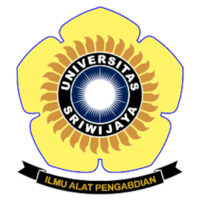Inventarisasi Tungau pada Cabai di Kabupaten Ogan Ilir, Sumatera Selatan
Abstract
Suhada MB, Ghozi Ma, Baihaq BB, Uary Z, Ningrahayu S, Putri NA, Umayah A, Gunawan B, Arsi A. 2022. Inventory of mites on chili in Ogan Ilir District, South Sumatera. In: Herlinda S et al. (Eds.), Prosiding Seminar Nasional Lahan Suboptimal ke-10 Tahun 2022, Palembang 27 Oktober 2022. pp. 1049-1056. Palembang: Penerbit & Percetakan Universitas Sriwijaya (UNSRI).
The cause of damage to chili plants is caused by plant pest organisms (OPT), including mite-type pest organisms (Acariformes). This study aimed to inventory the types of mites that attack chili plants. Field research has been carried out on chili plants in three villages namely Timbangan Village, Pulau Semambu Village, and Palemraya Village, Ogan Ilir Regency, South Sumatra and Laboratory observations were carried out at the Entomology Laboratory of the Plant Protection Study Program, Faculty of Agriculture, Sriwijaya University. This research was conducted starting on August 26 to September 8, 2022. Sampling was carried out descriptively and data collection in the field was carried out in a survey with systematic random sampling technique at the observation location. Sampling of chili plants was selected when the chili plants had entered the production phase which showed symptoms of attack on chili. Samples of mites were taken from the leaves and individual mites were taken and then observed under a microscope. The results obtained from all samples showed that the red mites (Tetranycus sp.) and yellow mites (Polyphagotarsonemus latus) were the red mites (Tetranycus sp.) and yellow mites (P.latus). From the samples taken from the survey in three villages, two species of mites were found. Of the 7 samples that have been identified, a red mite species (Tetranycus sp) was found in the first village located in Timbangan Village. In the second village, located in Palemraya Village, from 5 samples that have been identified, a yellow mite species (P.latus) was found. The last village, located in Pulau Semambu Village, found the same species as Palemraya Village, namely the yellow mite (P.latus). The mites found in the study in the chili area in three villages in Ogan Ilir were mites of the species Tetranycus sp and P.latus. Mite control in chili can be done biologically by utilizing natural enemies of mites such as the beetle Amblysiuscucumeris Oriusminutes, Coccinellidae Coccinellarepanda.
Keywords
Full Text:
PDFArticle Metrics
Abstract view : 765 timesPDF - 2846 times
Refbacks
- There are currently no refbacks.

